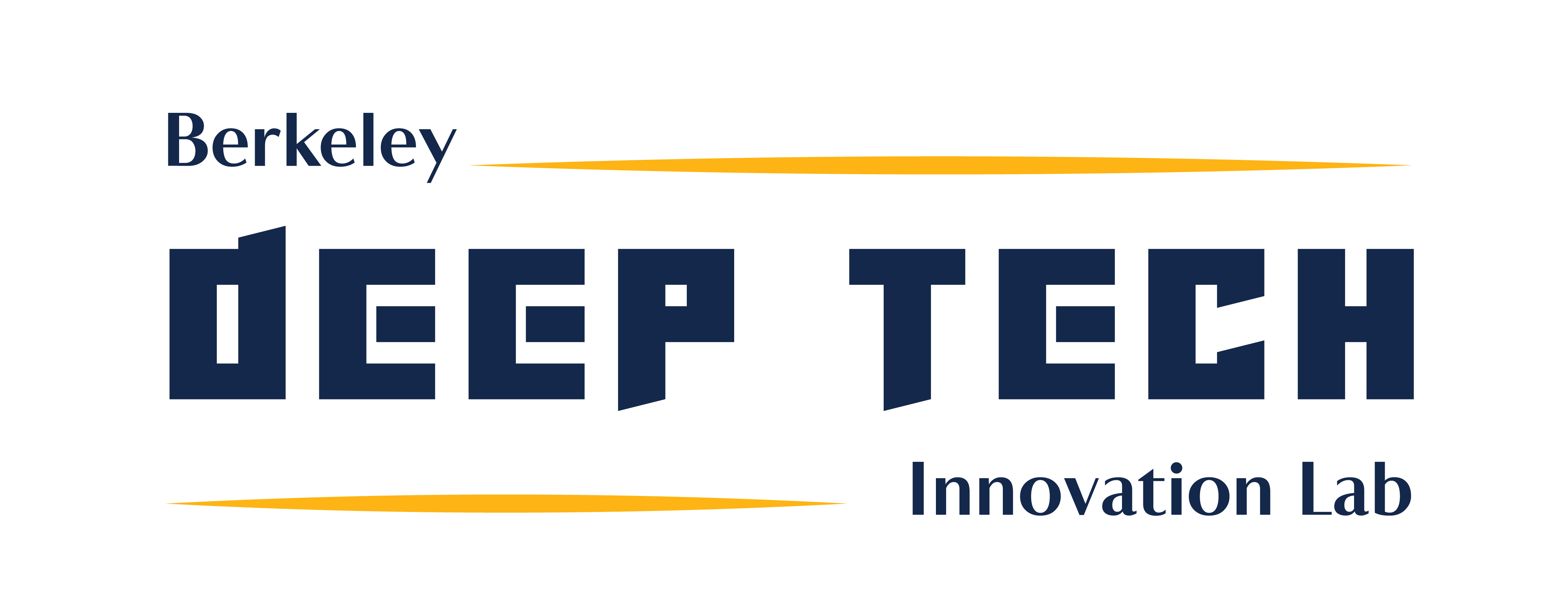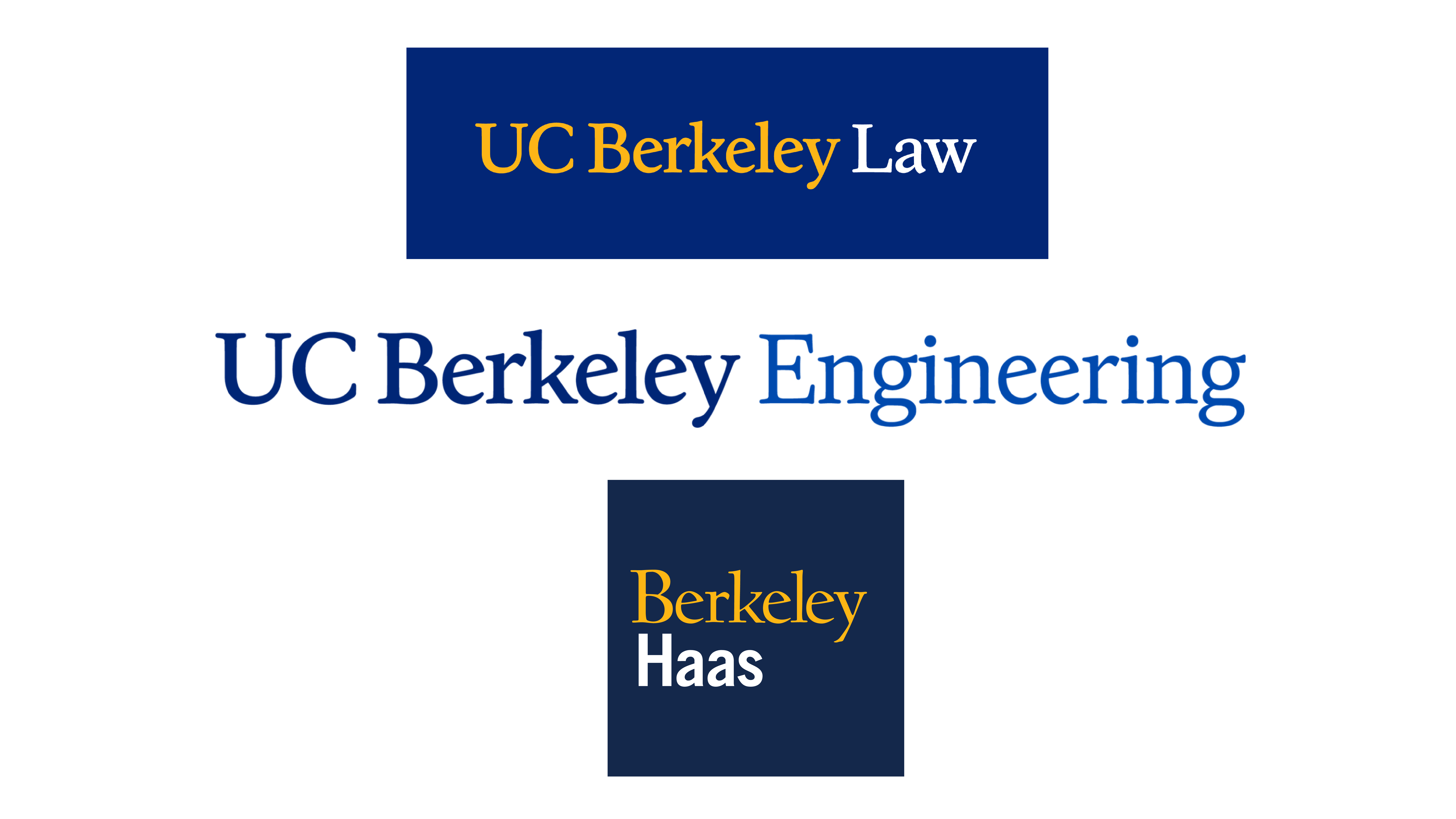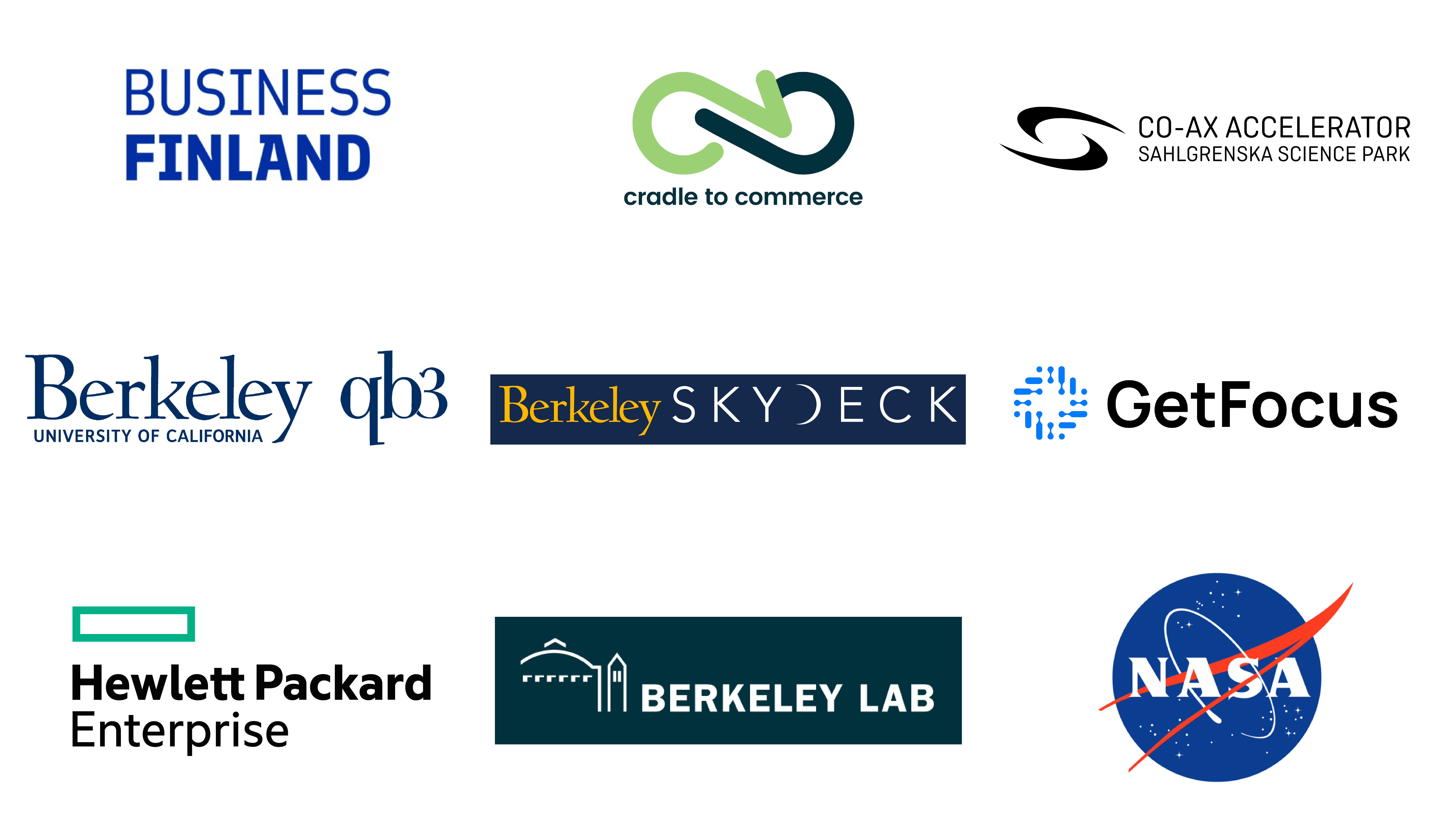Welcome to the Deep Tech Innovation Lab, where partners embark on a transformative journey into the realm of deep tech innovation. Our platform offers unparalleled insights into early-stage projects, delivering real-world assessments and interdisciplinary feedback to enhance technological development. By joining forces with us, partners not only tap into a wealth of expertise but also gain access to a diverse pool of emerging talent – top graduate students from engineering, business, and law. This dynamic collaboration extends to our network of industry partners, comprising cutting-edge research labs, startups, and corporate innovation teams.
-
At the heart of our approach lies a careful selection of early-stage deep technology projects, ensuring tangible impact and rich learning experiences.
-
Our unique courses attract a diverse group of graduate students who form interdisciplinary teams. Together with industry partners, these teams engage in comprehensive assessments involving technology mapping, patent analysis, and customer discovery.
-
The culmination is a strategic presentation to industry partners, offering key insights on market entry, innovative business models, and directions for future research. Join us in shaping the future of deep tech innovation – where insights, talent, and transformative ideas converge.
Participating in the Deep Tech Innovation Lab was one of our most rewarding early-stage experiences. The student teams delivered rigorous, often surprising insights through their customer discovery work. Beyond analysis, it was a rare opportunity for two-way mentorship—we left with a sharper strategy, renewed focus, and deep appreciation for the next generation of innovators.” I was truly impressed by how the DeepTech students represented themselves—and AggBio—with such professionalism and enthusiasm.
The students were fun to work with. They were very enthusiastic and did an excellent job communicating with and engaging with stakeholders. They gathered data from various sources and presented compelling cases for novel markets where our technologies could be commercialized. Their presentations were thorough and included specific contacts and organizations that could potentially license our innovations. I was impressed by the depth of their research and the innovative approaches they proposed for bringing our technologies to the market.
Dear Team: Thank you for all the great work and dedication throughout the project. It’s been a pleasure collaborating with you, and I’ve truly appreciated the curiosity and energy you brought to the process. We’re very happy with the insights and deliverables, which will be valuable as we continue developing NanoDentica.
The students conducted a variety of expert interviews related to our technology which was incredibly helpful in understanding the pros and cons from an industrial perspective. The end of year “Emerging Deep Tech Market Trends-2024” event was one of the most amazing events I have attended in recent years. The students did extraordinary work in such a short time – going from familiarizing themselves with a new topic to becoming expert presenters.
Deep tech innovation lab has provided invaluable insights for dozens technologies related to climate tech, health care, and materials science. The deep analysis and student-led presentations provide our tech transfer office and principal investigators with deep analysis into the technology, trends, and players shaping emerging technology landscapes.
The team achieved significant results in a relatively short time: understanding the technology behind Detectivio’s contactless vital signs measurement solution, developing a plan to explore a potential entry into the US market, and interviewing experts for more in-depth feedback. Furthermore, they also synthesized their learnings and insights with a concise summary and perfect pitch. Their enthusiasm and energy are captivating, and it was a pleasure to guide them. A great experience, certainly an invaluable contribution to Detectivio as well. Kudos also to the Deep Tech Innovation Lab leadership for the supporting framework during the spring.
FAQ
What is the deep tech lab?
The Deep Tech Innovation Lab combines research, education, and innovation to facilitate the translation of research into successful innovations. The goal is to develop new tools and capabilities to prepare future technology leaders for the challenge of commercializing deep technology innovations through collaboration among faculty, students, and R&D organizations, both private and public.
The program is run through the Tusher Strategic Initiative for Technology Leadership within the Institute for Business Innovation at the Berkeley Haas School of Business.
How does the program work?
Specific courses at UC Berkeley offered through Berkeley Engineering, Berkeley Law, and Haas School of Business are supported by the Lab. These courses include ENG 273/MBA 293.7/Law 279.31 offered in the fall semester, ENG274/MBA 295.T offered in the spring semester, ENG270I, a bootcamp offered through the Fung Institute of Engineering Leadership in early January, and ENG170B, a summer session offered to upper-level undergrads and international students.
Students are formed into interdisciplinary teams (when possible teams consist of students from business, law, engineering) and are matched with real-world projects from our partners, which include companies, research institutes, startups, and other innovation hubs. Students are introduced to a variety of frameworks focused on analyzing and commercializing deep tech projects, which they apply through their teams on real-world technologies. The faculty, together with project leaders from our partner organizations, oversee their work throughout the course. Finally, students present their findings to the faculty and project leaders at the end of the semester. As in real life, project outcomes vary. Some projects end up being licensed to third parties, some are forced to reconsider their direction and potentially pivot, while others turn into startups, or further accelerate toward commercial markets.
The Lab uses the project results academically to develop better innovation tools, curricula, and insights into transforming research into innovation for investors, firms, and policymakers.
What types of analysis are performed?
The Lab uses a unique and constantly improving, interdisciplinary model of analysis comprised of market analysis, technology assessment, intellectual property management, and regulatory compliance, combined with overall commercialization strategies focused on the unique challenges facing deep tech innovation. Below is a more comprehensive list of analyses:
1. Market Analysis and Entry Strategy:
-
- Analyzing market dynamics, segments, customers, geographies, and competitors.
- Conducting market research, surveys, and pilot programs to validate market interest.
- Developing strategies for customer acquisition, lead generation, and engagement.
- Evaluating potential risks, challenges, and risk mitigation strategies.
2. Value Chain and Supply Chain Optimization:
-
- Mapping and analyzing the value chain for market entry.
- Optimizing the supply chain for technology, including sourcing, manufacturing, and logistics.
- Conducting cost analysis for technology development, production, and market entry.
3. Business Model and Commercialization:
-
- Analyzing and recommending business models and commercialization opportunities.
- Developing investment pitch decks and attracting funding.
- Providing recommendations on licensing models, terms, and negotiation strategies.
4. Technology Assessment and Roadmap:
-
- Reviewing the technology landscape and identifying the current state of the art.
- Analyzing the competitive technology landscape and assessing unique technology performance attributes.
- Identifying key functions, competing solutions, and alternative technologies.
- Developing detailed technology roadmaps for bringing the technology to market.
5. Intellectual Property (IP) Analysis:
-
- Performing patent landscape analysis and identifying patent families.
- Assessing the legal status of patents and potential patent options.
- Identifying other forms of IP rights applicable to the technology.
- Evaluating the detectability and potential for designing around the technology.
6. Regulatory Compliance and Environmental Impact:
-
- Examining the regulatory environment and identifying key regulatory issues.
- Providing guidance on compliance, certifications, and approvals.
- Assessing the potential environmental impact and sustainable practices.
7. Innovation Ecosystem and Collaboration:
-
- Mapping the innovation ecosystem, including research institutions, collaborators, and funding sources.
- Identifying and interviewing key technical experts for insights.
- Researching patents and scientific literature to overcome technology challenges.
What specific types of questions can be addressed?
Here are some examples of the types of questions our student teams can attempt to answer:
- What does the IP landscape look like, how should we think about IP strategy?
- What does the technology landscape look like? What are the technology trends?
- What are some comparative technologies or alternative approaches?
- How should we reposition our offerings, what are some additional application areas or markets to target?
- What is a good GoTo Market/Positioning plan?
- What is the appropriate partnership strategy?
- What is a sensible funding strategy?
- What grants might be available for funding?
- Which VCs are likely to fund our project?
- Who are our ideal customers, end users, partners?
- What players are in our supply chain? value chain?
- Where are we positioned in the value chain?
- What are some priorities/Constraints around purchasing?
- What is our beachhead market?
- What additional markets we could look at?
- Who are the OEM’s we could partner with?
- What do technical/R&D experts think about the market, technology, and IP/regulatory landscape?
- What do commercialization experts, business development teams or marketing experts think about our technology, the market, IP/regulatory landscape?
- What are the key customer and market segments?
- How large are the markets?
- Where are the predominant market opportunities? In what geographies?
- Assess market adoption – How likely are consumers to adopt new tech?
- How do we increase adoption?
- What are some suggestions for a product roll-out including sequencing?
- What are some possible revenue models?
- What are the capital expenditures to consider?
- What are the unit economics?
- Who are some possible licensing partners?
- Regulatory and Gov. Policies – where do we fit in?
- What are the potential economic and/or climate impacts of the technology?
- What are the key pain points for adoption?
What deliverables are produced by the student teams?
Students typically deliver a slide deck and present to our partners in-person or on web-conference call. The materials delivered are geared to answer the specific questions the partner requested.
Previous teams have delivered competitor lists, market-entry strategies, patent landscape analysis, discovery interview transcripts (includes technology discovery, IP discovery, market discovery, and customer discovery), contacts at organizations that might license the technology, invest in the technology, or somehow partner with the project partner, value chain analysis, techno-economic analysis and other materials useful for the partner to move the technology forward.
What are the time commitment expectations of partners?
At a minimum, partners are expected to speak to the student teams at the beginning and the end of the course. In addition, throughout the semester, students will email partner representatives to clarify specific instructions and deliverables via email. That said, it is much more productive if partners are engaged with students on weekly or twice monthly conference calls throughout the semester to help guide the student teams’ analysis.
How does this program help commercialize my technology?
Student teams dive deep into the technology, markets, and IP landscapes related to our partners’ projects. There are many pathways to commercialization. Past projects teams have identified non-intuitive application areas, potential licensees, unknown competition, technology bottle necks, regulatory and intellectual property risks and opportunities, funding options, and have even generated ideas for future research. The process is iterative by nature, we have run this program since 2020 and have yet to run into a scenario where the students did not uncover something new and useful for our partners.
What do partners find valuable about the program?
- Access to talented UC Berkeley students: Partners benefit from the opportunity to work with ambitious, optimistic, and intelligent students from UC Berkeley, who bring fresh perspectives and a deep dive into the partners’ technologies and commercialization opportunities.
- Comprehensive analysis and insights: Partners appreciate the depth and scope of analysis that students achieve within a short timeframe, providing valuable insights and suggestions for technology commercialization.
- Mentorship opportunities: Partners appreciate the opportunity to mentor students and gain first access to engineers, scientists, business, and law students from UC Berkeley.
- Startup support: For startup partners, having a dedicated team of students to address specific questions and challenges related to their ventures is highly valuable.
- Enhanced commercialization efforts: Technology commercialization experts benefit from the in-depth analysis and recommendations provided by students, as well as potential leads for licensees.
- Customer feedback and expert insights: Partners value the customer feedback, market research, and insights from technology, business, marketing, and other experts that students bring to their projects.
What impact has the program had over time?
The program has had a significant impact over time, both for the students and the partners involved. Here are some key highlights:
1. Student career development:
-
- Students have leveraged the analytical skills and real-world experience gained from the program to support their careers in corporations, startups, consulting firms, and various other industries.
- The hands-on project work has proven invaluable for students during job interviews, allowing them to demonstrate their practical experience and problem-solving abilities.
- Continued partner engagement:
-
- The program’s impact is evident from the fact that partners continue to bring new projects to the table, suggesting that they find the process valuable and beneficial.
- Partners have utilized the program’s outputs in various ways, such as:
- Initiating early conversations and collaborations with potential partners or customers
- Identifying and evaluating potential customer segments
- Hiring program students directly into their organizations, recognizing their talent and experience
- Fostering innovation and commercialization:
-
- The program has played a crucial role in supporting the commercialization of innovative technologies by providing in-depth analysis, market insights, and strategic recommendations.
- By collaborating with partners from research institutions, startups, corporations, and innovation hubs, the program has facilitated the transfer of knowledge and technologies from academia to industry.
- Building a talented workforce:
-
- Through hands-on training and exposure to real-world challenges, the program has contributed to developing a skilled workforce equipped with the necessary knowledge and experience to drive innovation and technology commercialization.
Overall, the program has had a lasting impact by enhancing student career prospects, fostering strong partnerships with industry stakeholders, supporting the commercialization of innovative technologies, and nurturing a talented pool of professionals ready to tackle the challenges of technology leadership and entrepreneurship.
How do you deal with confidentiality?
Some of the projects we take on have confidentiality provisions while others do not. For those partners that are concerned about confidentiality issues, students will sign non-disclosure agreements. During class presentations and pitch practice sessions we encourage students who have signed confidentiality agreements to redact any information that would be considered confidential. We use this as a learning opportunity to once again help bridge the gap for students transitioning from university to the workforce. If a partner project is highly confidential, we would discourage them from bringing it to the deep tech innovation lab.
Your Bridge to Berkeley’s Deep Tech Ecosystem


